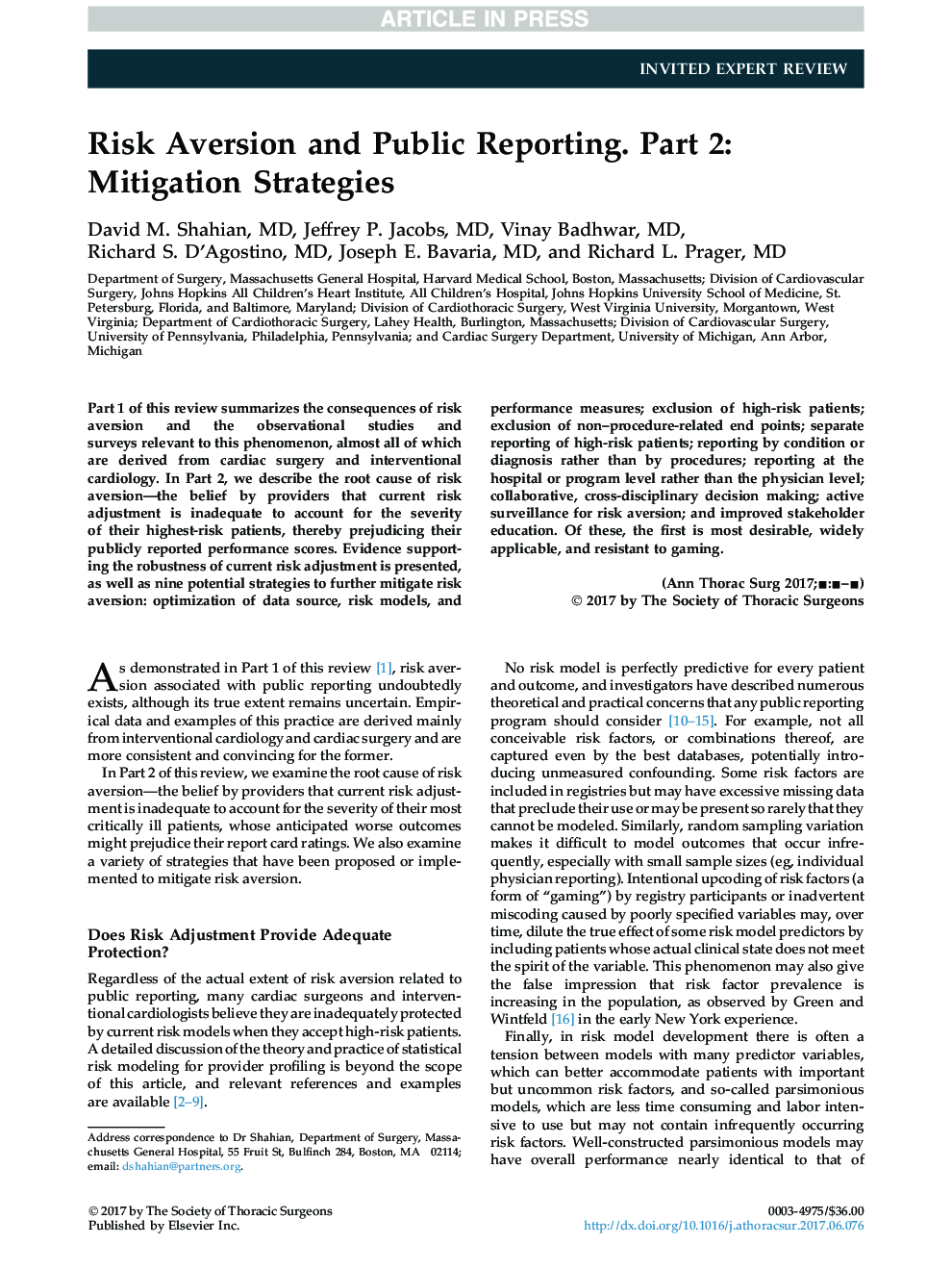| Article ID | Journal | Published Year | Pages | File Type |
|---|---|---|---|---|
| 8653049 | The Annals of Thoracic Surgery | 2017 | 9 Pages |
Abstract
Part 1 of this review summarizes the consequences of risk aversion and the observational studies and surveys relevant to this phenomenon, almost all of which are derived from cardiac surgery and interventional cardiology. In Part 2, we describe the root cause of risk aversion-the belief by providers that current risk adjustment is inadequate to account for the severity of their highest-risk patients, thereby prejudicing their publicly reported performance scores. Evidence supporting the robustness of current risk adjustment is presented, as well as nine potential strategies to further mitigate risk aversion: optimization of data source, risk models, and performance measures; exclusion of high-risk patients; exclusion of non-procedure-related end points; separate reporting of high-risk patients; reporting by condition or diagnosis rather than by procedures; reporting at the hospital or program level rather than the physician level; collaborative, cross-disciplinary decision making; active surveillance for risk aversion; and improved stakeholder education. Of these, the first is most desirable, widely applicable, and resistant to gaming.
Related Topics
Health Sciences
Medicine and Dentistry
Cardiology and Cardiovascular Medicine
Authors
David M. MD, Jeffrey P. MD, Vinay MD, Richard S. MD, Joseph E. MD, Richard L. MD,
